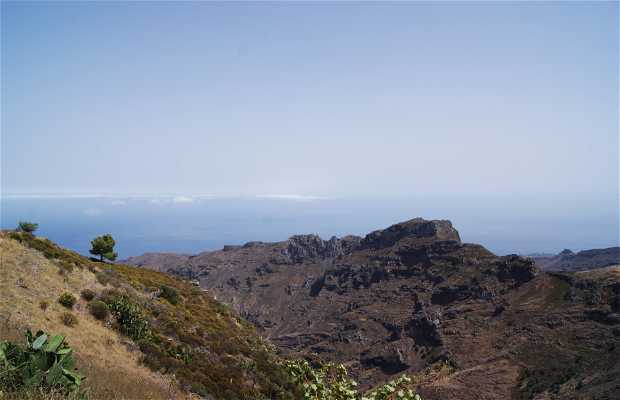El Cabrito Viewpoint
After surrounding the island, it is necessary to make a stop in a viewpoint that can remain unnoticed, since it doesn’t look too important from the car. But you have to stop to understand the importance of this enclave.
Actually, the natural monument of Barranco del Cabrito includes two ravines: Juan Vera, which is continued in El Cabrito and Guancha, both are separated by an abrupt tongue of land in which the erosion has carved sharp crests and spectacular volcanic plugs like Magro and Sombrero.
In the most inaccessible slopes grows a rare endemism of Gomera flora. The Barranco del Cabrito flows into a pebbled beach next to a hotel that used to be a farm that grew tomatoes and bananas. In the late 80’s, the controversial Viennese artist, Otto Mühl established a commune, rehabilitating the ancient buildings of the plantation.






